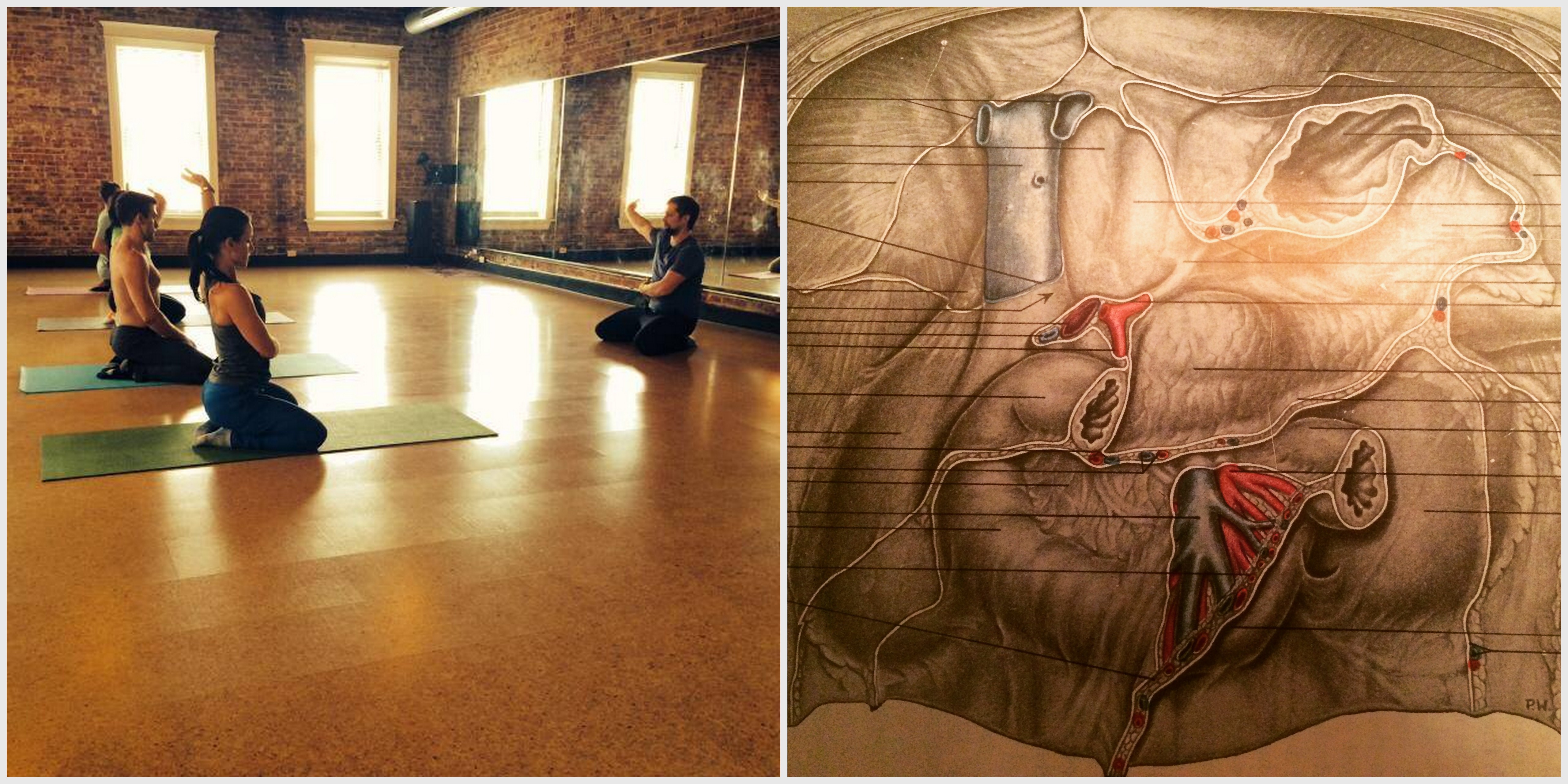
Protecting the health of vital organs like the heart and lungs is hugely important. Did you know you can achieve healthier organ function with ELDOA? In my previous blog post on fascia, I explained how the ELDOA method of exercise helps create an environment in which fluid flows more freely through the fascia and connective tissues. By creating healthier fascia, ELDOA in turn supports the nourishment of muscles, bones, nerves, and vital organs. In this post, I’d like to focus specifically on how the ELDOA method influences and improves organ function.
The Relationship between Fascia and Organ Function
To understand the importance of fascia in relation to organ function, it might be helpful to think of fascia as the “skin” of all tissue structures—including organs. The heart, lungs, kidney, intestines, liver, bladder, and uterus are all encased by this “skin” which gives them shape and holds them in place by extending outward through ligaments attaching to other bones, organs, and muscles. There are often multiple layers of fascia. These layers aid in allowing for free movement within the “skin.” And they hold special fluids that are important to the health and nourishment of the particular organ they are serving.
The fascia also holds the tension placed upon all of the individual cells of the organ it is covering. This is due to its continuation into the network of protein fibers connecting all the individual cells within the organ. This tension—originating within the posture of the body and continuing into the cells of each organ—directs the function of the cells and helps maintain the quality of every tissue and every organ in the body.1 Thus the health of the fascia has a huge impact on the health and function of vital organs, including the heart and lungs.2
How Does ELDOA Lead to Healthy Organ Function?
We already know that ELDOA exercises create healthier fascia by placing the body in postures that provide increased circulation, fluid flow, and tissue nourishment. We also know that healthier fascia means healthier organ function.
But how does the ELDOA method work to influence specific organs?
It’s all about balanced tension. Above I explained that there is tension among the connective tissues encasing each organ. This tension is extremely important because it directly influences the cells within the organ as well as the organ’s ability to function properly.3 ELDOA exercises were specifically designed to create the appropriate balance of tension versus compression needed for optimal organ function. These postural exercises can be programmed in a general way, or they can be individually prescribed to meet your specific needs. ELDOA exercises can also be designed to place and relieve tension on a specific organ and may even be used to “treat” a dysfunctional organ. For example, I often recommend the global postural stretches—designed by Dr. Guy Voyer as part of the ELDOA Method—for clients wishing to target the kidney, heart, lungs, liver, bladder, colon, prostate, or uterus.
ELDOA Group Classes
Ready to get the juices flowing? Join me for ELDOA group classes right here in St. Louis! If you don’t live in the St. Louis area, contact me about doing a class in your city or check out Soma Finder to search for a local practitioner.
Want to receive more insights on the latest topics in health and fitness? Sign up for my newsletter. And stay tuned for more info on the benefits of ELDOA right here on the blog.
References
- Ushiki T. Collagen fibers, reticular fibers and elastic fibers: a comprehensive understanding from a morphological viewpoint. Arch Histol Cytol 65, No. 2 (2002): 109-126. http://www.ncbi.nlm.nih.gov/pubmed/12164335
- Tanasković I, Lačković V, Gluvić Z, et al. The influence of extracellular matrix composition on the pathogenesis of coronary atherosclerosis. Arch Biol Sci Belgrade 63, No. 2 (2011): 333-343. http://www.doiserbia.nb.rs/img/doi/0354-4664/2011/0354-46641102333T.pdf
- Rhee S, Jiang H, Ho CH, et al. Microtubule function in fibroblast spreading is modulated according to the tension state of cell–matrix interactions. Proc Natl Acad Sci USA 104, No. 13 (Mar 2007): 5425–5430. http://www.ncbi.nlm.nih.gov/pmc/articles/PMC1838480/







